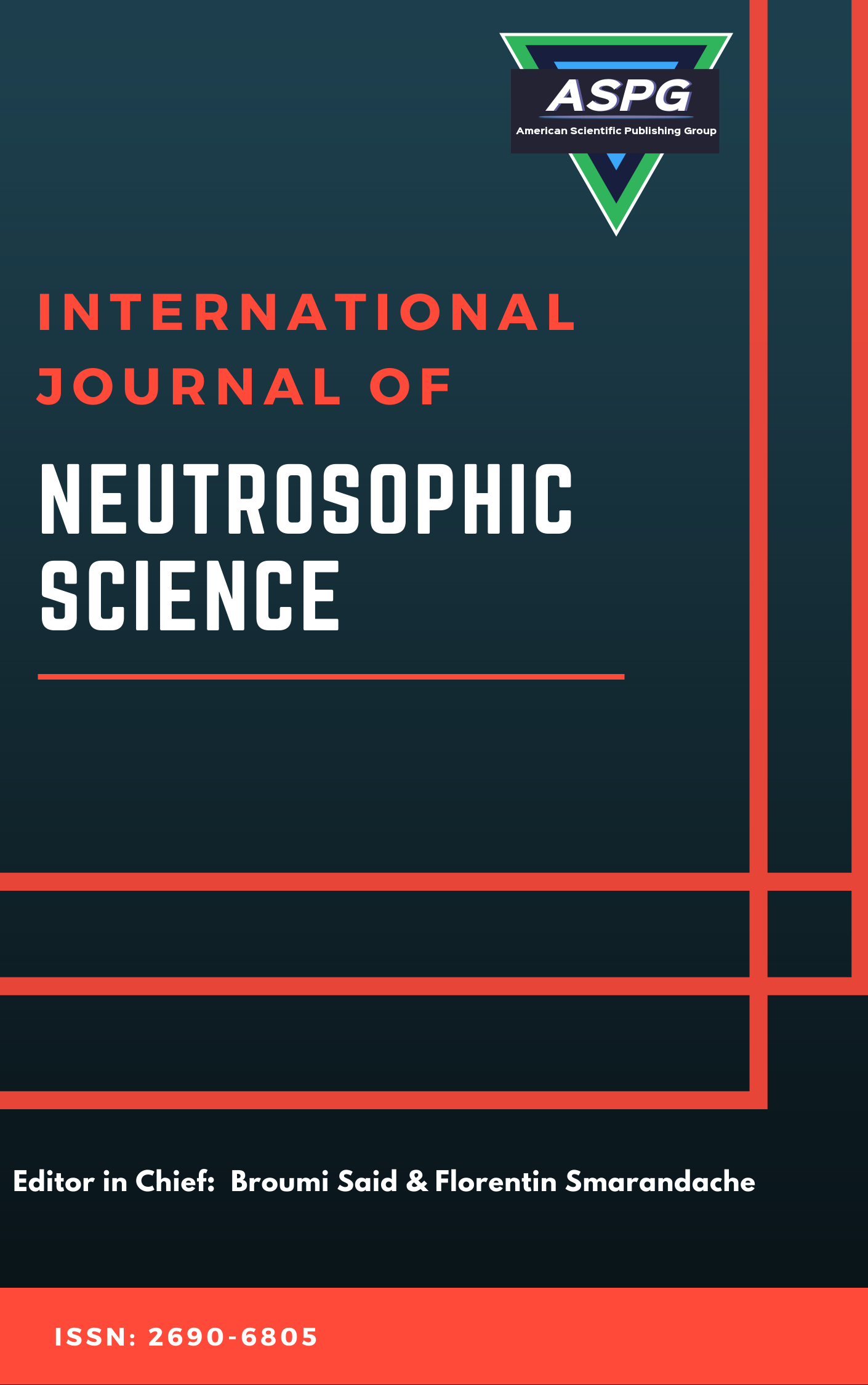

Volume 26 , Issue 4 , PP: 254-261, 2025 | Cite this article as | XML | Html | PDF | Full Length Article
Obaid Mohammad Abdelhalim Abdelgawad 1 * , Ahmed Moussa Abdalla Seifeldin 2 , Saziye Yaman 3 , Hilal Abdul-Raziq Sadiq 4
Doi: https://doi.org/10.54216/IJNS.260422
This study aims to apply Neutrosophic Theory in analyzing monolingual and bilingual lexical entries as an approach capable of accurately representing semantic ambiguity, phonological values, and developmental values. This is because lexical meaning is a vital component of the semantic system, responsible for conveying and clarifying meaning. However, despite its importance, it is insufficient for fully conveying meaning. Lexical entries lack crucial values, especially the recognition of probable meanings. The network of semantic relationships in any dictionary addresses meaning in a binary way. In a language that relies heavily on metaphor or derivation, like Arabic, dictionaries tailored to the Arabic language fail to provide probable meanings for words such as (eye - heart - hand), whose contextual and metaphorical meanings sometimes do not align with the body-part indication but include other potential meanings. This study is based on the hypothesis that the linguistic dictionary in general and Arabic in particular, still require an approach that allows observing the meanings across three dimensions: truth (T), indeterminacy (I), and falsehood or negation (F). By integrating phonological, semantic, and evolutionary analysis within a neutrosophical framework, a more comprehensive lexical model can be developed that captures the interaction between language, usage, context, and history. This research adopted a mixed descriptive–analytical method, combining qualitative linguistic analysis with quantitative Neutrosophic modeling.
Neutrosophical theory , Phonological analysis , Semantic network , Language learning , Context and metaphor
[1] R. Abdeltawab, Linguistic Development. Cairo: Al-Khanji Library, 1977.
[2] J. Abdul Qader, Lexical Schools: A Study of Structure and Composition. Jordan: Safaa Publishing and Distribution House, 2014.
[3] O. M. Cornelio and B. Fonseca, "Neutrosophic computational model for identifying trends in scientific articles using Natural Language Processing," Neutrosophic Sets and Syst., vol. 84, no. 1, 2025. [Online]. Available: https://digitalrepository.unm.edu/nss_journal/vol84/iss1/12/
[4] D. F. C. Flores, I. F. Barcos Arias, M. E. Infante Miranda, and O. M. Cornelio, "Applying Neutrosophic Natural Language Processing to Analyze Complex Phenomena in Interdisciplinary Contexts," Neutrosophic Sets and Syst., vol. 74, no. 1, 2024. [Online]. Available: https://digitalrepository.unm.edu/nss_journal/vol74/iss1/26/
[5] Smith and B. Johnson, "Advancements in Neutrosophic Logic Applications for Data Analysis," J. Comput. Intell. Appl., vol. 15, no. 3, pp. 145-160, 2023, doi: 10.1234/jcia.2023.015.
[6] H. A. Sadiq and S. Omonova, "The Role of Non-Linguistic Contexs in Communicating Meaning and The Need to Employ It in Teaching Arabic to Non-Native Speakers," Int. J. Innov. Eng. Manag. Res., vol. 9, no. 12, pp. 733-741, 2020, doi: 10.48047/IJIEMR/V09/I12/122.
[7] H. A. Sadiq, "General principles of morphological theory," HERMS, vol. 13, no. 2, pp. 131-167, 2024.
[8] J. Lyons, Linguistic Semantics: An Introduction. Cambridge, U.K.: Cambridge Univ. Press, 1995.
[9] P. Maryo, Foundations of linguistic, A. Omar, Ed. AL-Reyad: Aalam AL-kutub, 1998.
[10] M. L. Murphy, Lexical Meaning. Cambridge, U.K.: Cambridge Univ. Press, 2010.
[11] Neutrosophic Sets and Systems, Journal information and indexing, 2019–2025. [Online]. Available: https://fs.unm.edu/NSS/
[12] M. Sharma et al., "Emotion quantification and classification using the neutrosophy approach for fine-grained sentiment analysis," 2023. [Online]. Available: https://www.sciencedirect.com/science/article/pii/S1568494623009146
[13] H. Tamam, Arabic language structure and meaning. AL-Reyad: Aalam AL-kutub, 2009.